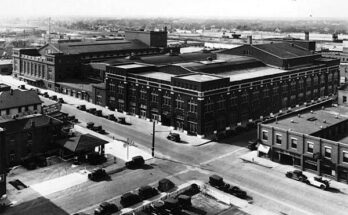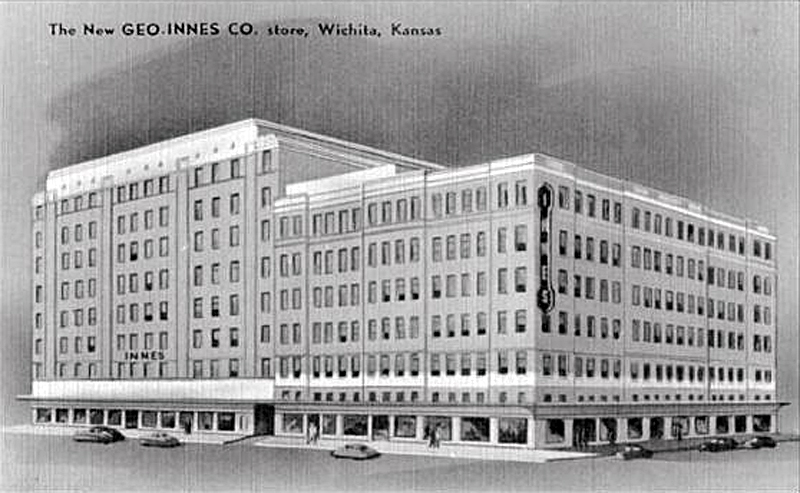
Long before the era of the big box store, every town in America, large and small, depended on local merchants to supply its citizens with the sundry necessities of day-to-day life. In smaller burgs, often a general mercantile would do its best to keep in stock, or procure by order, whatever a customer might need, from groceries to clothing to kerosene; bigger cities saw the development of more elegant emporia, all the better to serve a more refined clientele.
As the 19th century drew toward a close, a young entrepreneur named Walter Innes, barely out of his teens, migrated from Lawrence to New York City in order to pursue his dreams of becoming a merchant like his father and uncle before him. In 1897, while working at the legendary Arnold Constable & Co. (America’s oldest department store at the time, famously known as “The Palace of Trade”), Innes learned of the sudden death from appendicitis of 47-year-old J.J. McNamara, owner of one of Wichita’s biggest dry goods stores. Innes saw his opportunity to strike out on his own, and with financial backing from his superiors in New York, bought the former Munson & McNamara store and named it Geo. Innes & Company after his Uncle George, already a respected purveyor of goods in Lawrence.
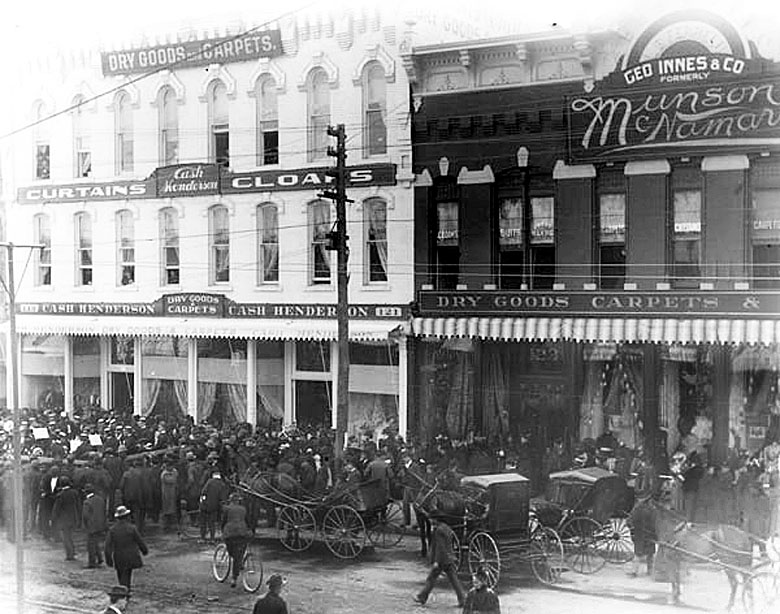
Young Walter proved to be a canny businessman. In ten years he was so successful that his staff of 25 had swollen to nearly 150 and the smallish Ferrell Building at 123 N. Main was no longer big enough. Innes made what was considered a huge gamble and moved the store to the brand new Smyth Building at the northeast corner of Douglas & Lawrence (Broadway), now the site of the Bank IV (Bank of America) complex. In an incredible feat of organization, not to mention sheer hustle, the old store closed Thursday evening, March 26, 1908 at 5 p.m. and reopened in the new location the next morning. Shuttling the entire store’s stock and setting it up in the new building required ten horse-drawn wagons and 136 employees working late into the night.
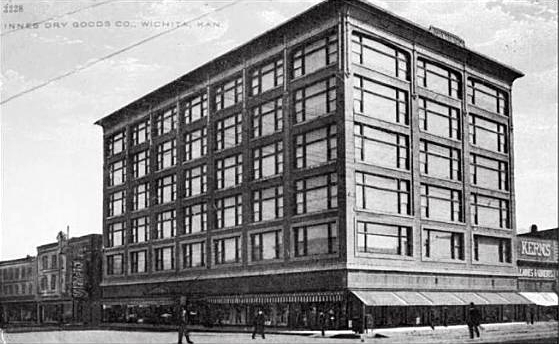
The move was seen as risky business because at the time Main Street was the city’s central commercial zone; Innes’ bold stratagem not only changed people’s shopping habits, but began to radically influence the shape of downtown Wichita. In the years that followed, Innes helped finance numerous new buildings and ventures in the neighborhood of his new store, including the Orpheum Theatre, the Allis Hotel and the Petroleum Building. In addition, to keep up with the demand for furniture, Geo. Innes & Co. built a separate four-story warehouse & outlet store at First & Mead in 1919.
Walter’s uncle George Innes, namesake of the business, had come aboard as partner early on and stayed until retiring in 1927. At that time the Innes store had been running like a well-oiled machine, its staff and sales volume both steadily growing. A newspaper ad boasted that Innes & Co. employed an average of nearly 250 people and paid out over a quarter million dollars a year in salaries, which today would be in the neighborhood of twelve million dollars. Walter Innes saw more opportunity for expansion, not just with added floorspace for more merchandise, but in the increasingly lucrative field of mail-order sales. He bought the property at the northwest corner of Broadway & William and built his own state-of-the-art six-story department store there, razing the Princess Theater and Evans Building in the process.

On Tuesday, Nov. 8, 1927, the gleaming new Geo. Innes & Co. department store opened its doors to a bedazzled public. The new facility boasted the latest in elegant design, and for those shoppers who found themselves a bit peckish in the wake of an afternoon spent browsing floor after floor of name-brand merchandise, the famous Innes Tea Room from the previous building was reincarnated here, bigger and even more beautiful than before.
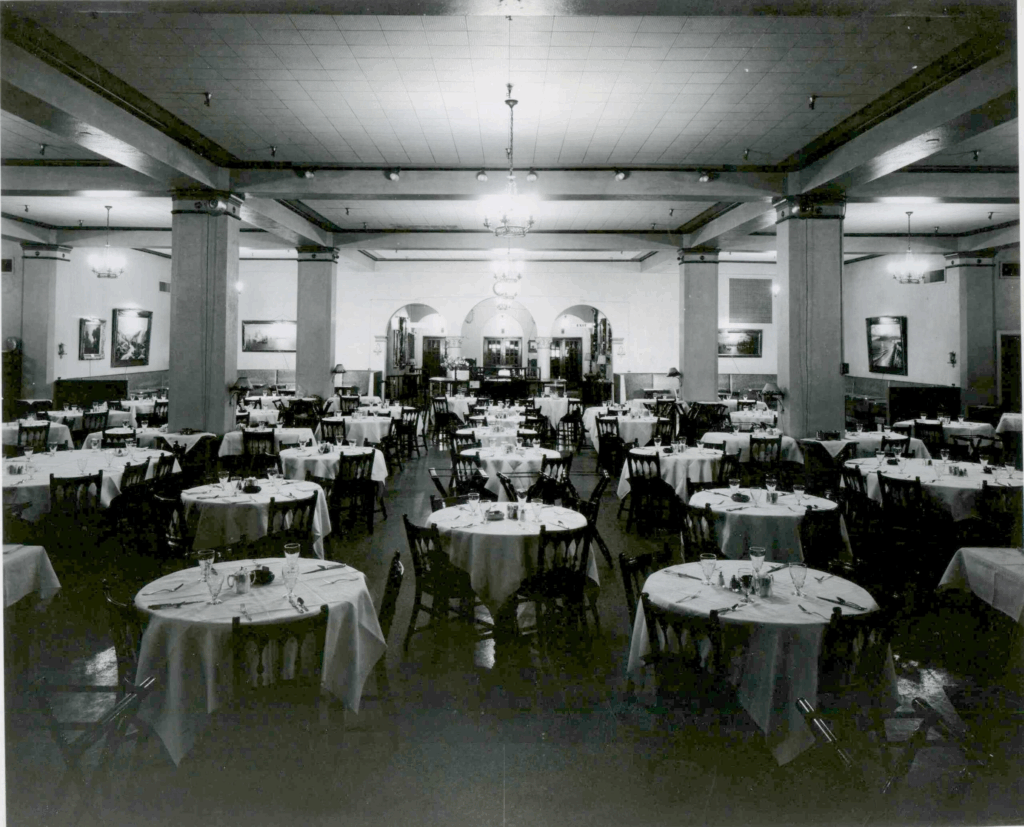
Even the Great Depression couldn’t hold back the Innes retail juggernaut. In 1930, only months after the stock market crash, Geo. Innes & Co. secured a $150,000 contract to furnish the lavish new Allis Hotel. The store did steady business, adding more stock and more staff, through the hardest of times and on through the end of World War II. More expansion was in the cards. Walter Innes bought the rest of the block on William, all the way to Market Street, and added an eight-story building to the existing six-story structure, at the astronomical cost of one million dollars. The new addition not only more than doubled the existing facility; when it opened in October 1948 it also featured the very first escalators anywhere in the state of Kansas. In keeping with the latest retail trends, 1951 saw the introduction of “charge plate” sales, a first for Wichita, at the Innes store.
By then there were roughly 1,000 people on the Innes payroll, and Walter Innes, by all accounts a thoughtful and kind boss, was reputed to know every one of them by name. The fancy Innes complex on William Street had its own staff cafeteria and penthouse sun deck, and most of the store’s workers were members of the employee club, which offered many perks.
At this time Walter Innes had operated his ever-expanding retail empire in Wichita for 50 solid years, and his influence on and reputation in Wichita were impossible to overstate. Walter’s son, Walter Jr., had long served as a vice-president of the company, and both father and son had been instrumental in helping attract the nascent aircraft industry to Wichita. The older man was growing tired and the younger man had other dreams to follow. The decision was made to sell Geo. Innes & Co. to the Younker Brothers retail chain in 1952, and Walter the Elder retired. He died in 1958 and was widely and sincerely mourned by the community at large.

The store was sold to Macy’s in 1955 and operated under that famed organization’s auspices until 1986, when it was sold to Dillard’s. Unfortunately by that time, Wichita’s downtown had become largely vacant due to rampant suburbanization, and Dillard’s gave up the ghost in 1988. In 1994 the once-proud, shining flagship of local retailers was remodeled into the dull, utilitarian Finney State Office Building, housing various State of Kansas offices. The Innes Wholesale Furniture Company warehouse on First Street was transformed in 1998 into a complex of upscale loft apartments, now known as Innes Station.
Today there remain no department stores in downtown Wichita.
UPDATE: The State of Kansas moved their offices out of the Finney Office Building not long after this article was written, and the building was resold. At the time of this writing, it is being redeveloped as part of the Kansas Health Science Center project.
Wichitarchaeology is a series of Wichita history columns originally posted in F5 Weekly. These articles are being presented here as they originally appeared, in some cases with additional photos, supporting links and/or addenda providing updated information. All photographs courtesy of the Wichita-Sedgwick County Historical Museum. This post was first published 4/4/2013.



